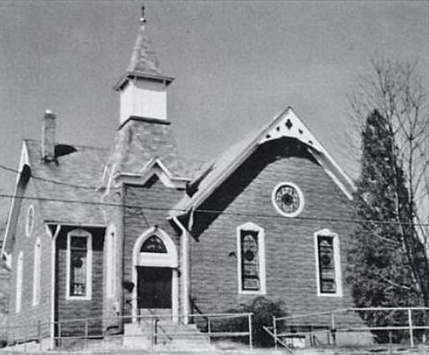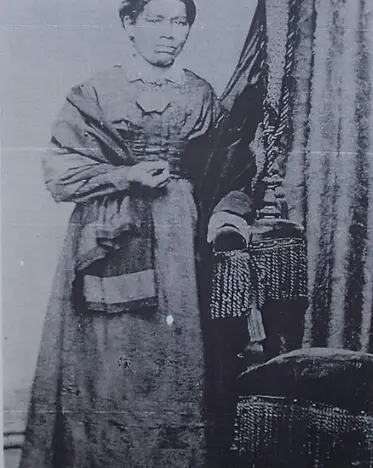
Our History
Introduction
Galloway United Methodist Church is a regional landmark overflowing with over 150 years of rich history and local culture. Established in 1867, Galloway was built out of the necessity for a spiritual home and community for local Black Americans. It has since been a gleaming beacon of hope for multiple generations and persists as a beloved part of the Falls Church community.

Galloway's Foundation
The Civil War brought about a dramatic change not only to the country but to the Northern Virginia area. At this time, the state's economy relied heavily on farming, particularly tobacco production. The destruction of most northern Virginia farmlands left the Virginian economy in ruins. This may have contributed immensely to John Dulany, owner of the Dulany plantation, deciding to divide and sell his landholdings.
In 1864, Harriet Brice, a former slave, purchased her first 12-acre plot of land divided from the Dulany Plantation. The plot housed the Brice home and farm, where they grew crops such as corn. However, the continued war destroyed their crops and, unfortunately, any salvageable crops were utilized by the Confederate army for their horses. Harriet claimed, "We didn’t accumulate anything after they came along and took possession … we just made ourselves content."
Around this time, Harriet and George began hosting religious meetings at their home. They were later encouraged by Elder Hiram Reed, a local white minister, to establish a Black church within the community. This led to Brice's family and friends holding fundraisers and rallies to raise money for the church's construction. Once they fundraised the money for the land, George's employer, John S. Crocker, warden of a jail in Washington, DC, and retired Union colonel helped Brice purchase another piece of Dulany Plantation in 1867.
The founding members began construction on the land. They were given an old loading platform from the West Falls Church train station that they used to build a log structure that became their church. That church would later become Galloway United Methodist.
The building was not only utilized as a church but also as a school for the Black children in the community. This led to the church establishing the first organized Sunday school program for Blacks in the Falls Church area.
Galloway's Growth
Around 1871 it became apparent that a more suitable house of worship was necessary. Harriet Brice went to her former slave master, William Y. Dulin, to seek help. Dulin agreed and donated timber from the Dulin plantation for the church members to hewn. The newly erected edifice was named Watkins Chapel after the current pastor. However, the log structure was used for education and events for several additional years.
Watkins Chapel continued to grow as a place of worship for the Black methodists in the community. In 1901 it was determined that there was a need for an even larger building. On June 27, 1901, another name change took place. Galloway Chapel and Parsonage was built and named after their most current minister, Reverend John Galloway. By 1918 the church basement was completed. In 1919 Rev. C. Brady came to the chapel. He was followed by Rev. John A. Reed in 1920 at which time the parsonage underwent its first renovation.

Galloway's Impact on the Community
From Galloway's inception, the church and congregation have always been implementers of change. Realizing the importance of activism, especially regarding defending the rights of Black community members, members of Galloway (Joseph Tinner and Louis Summerall) and other leaders in the Falls Church community (Edwin Henderson) began the Colored Citizens Protection League (CCPL).
Established in 1915, the CCPL was organized to counteract a law passed in 1912 by the Virginia legislature giving cities and towns the right to racially segregate residents. Their goal was to stop the ordinances that would restrict where Black Americans could own land in Falls Church and ultimately strip Blacks of their homes and property. With the help of W.E.B DuBois and the NAACP, the CCPL filed lawsuits against the ordinances. Although the suits were unsuccessful, the CCPL delayed their enforcement until they were made unconstitutional by the 1917 Supreme Court decision in the Buchanan v. Warley case. This case ruled that states and municipalities could not create segregated districts.
In 1918 the CCPL became the first rural branch of the NAACP with 35 members including Joseph Tinner as the president and Edwin Henderson as the Secretary.

Galloway Today
Galloway UMC has continued to develop and expand throughout the years. In March of 2012, after much work from Galloway historians, Galloway United Methodist Church and Cemetery became an official part of the Virginia Civil War Trails program in recognition of its rich history.
However, despite its history as a Black church, Galloway has made strides to become an inclusive house of worship that includes people of faith from many different ethnic and racial backgrounds. The story of Galloway continues as one of faith, community, and love. We hope you will join us on your spiritual journey as we continue to be committed to the community and God's word!
You can access the more in-depth 2018 version of Galloway's history through the clickable PDF logo below.